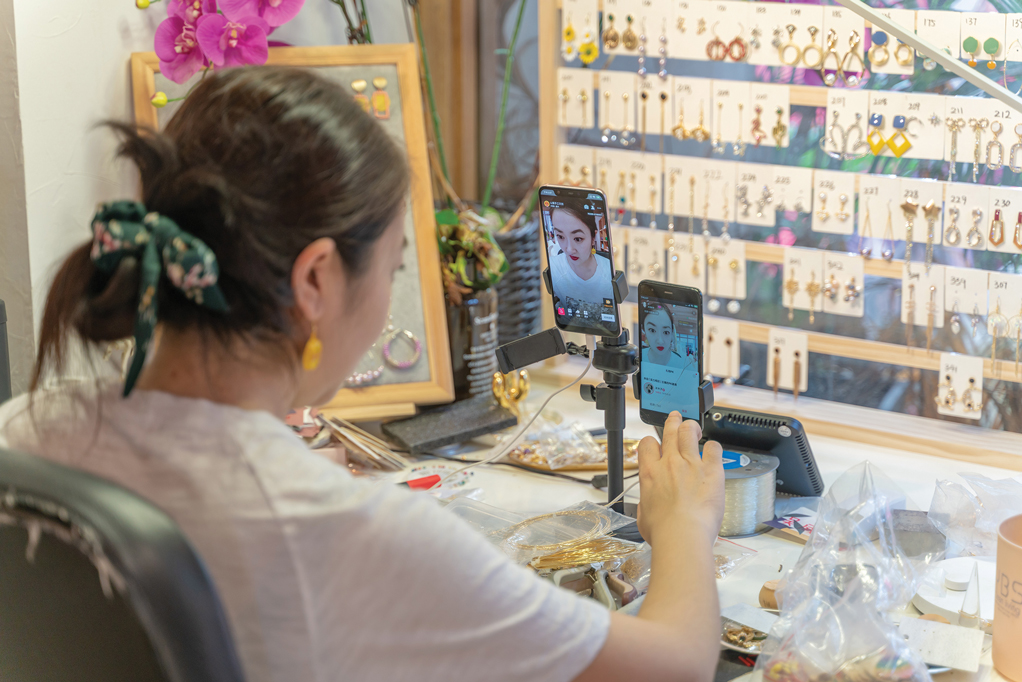For a business to be profitable, revenues must exceed costs. Where revenue is a prerequisite and comes from outside the business, the most important driver of cost is productivity and comes from within the business. Because revenue comes from customer payments, having a large number of quality customers with the ability and willingness to pay is a basic prerequisite for a profitable business. So how do you gather and maintain a large number of quality customers?
The ability to acquire new customers is certainly important, but a more critical factor is creating stickiness with your customers. If a business has a high level of customer stickiness, old customers are retained and new customers are more likely to stay. In the short term, the ability to acquire new customers is very important and the effect of stickiness is not initially obvious. But in the long run, the most important factor in determining the size of an organization’s customer base is consumer stickiness.
The reasoning behind this is very similar to that found in investing. In order to build wealth, you need capital in the form of principal and return on investment (ROI). The more capital and the higher the return on investment, the greater the wealth that will be accumulated in the future. In the short term, the capital determines the size of the increase in wealth, but over time, the long-term accumulation of wealth is determined primarily by the ROI and has little to do with the size of the added capital.
The role of principal is temporary, the role of ROI is long-term and continuous. The stickiness of a business to its customers is also long-term and continuous, and thus is the most important factor in determining the size of a business’s customer base.
Perspectives on Stickiness
To analyze how companies can increase customer stickiness, we can look at it from both the customer’s and the enterprise’s perspectives. Our purpose in writing this article is to show that the customer’s perspective is more fundamental and clear, while the enterprise’s perspective is derivative and relatively vague, which is not conducive to analyzing the problem.
If a company wants to have customers, from the customer’s point of view they must be deeply bound to the company’s products, which includes services. This binding has an active component, a passive component and a psychological component.
The active binding of customers to a product happens because the quality of the product is satisfactory: the product not only meets the needs of customers, but its cost is attractive compared to that of the competition.
Quality here refers to the customer’s overall experience of using the product, which also includes the buying and after-sales service experience, because consumer demand ultimately relates to both service and experience, the product is only a part of the service. Product quality and price are equally important.
With the exception of luxury consumers, customers generally want high quality and a low price. But, if this is not possible, customers who emphasize quality will naturally concede on price, and customers who emphasize price can also lower their requirements on quality. Different consumer groups have different requirements on quality and price, so enterprises can find core users through the correct positioning between the two. Obviously, enterprises that are uncompetitive in both will lose favor with their customers and therefore run the risk of being eliminated.
It is also possible that some less-competitive firms will survive for a period of time due to customers becoming passively bound to the product. The most prominent case is where a company’s product has created some form of monopoly in a market segment, with no legitimate alternative. For example, the manufacture of semiconductor chips with high-end photolithography requires machines that only the Dutch firm ASML can produce. So, even if customers were to be dissatisfied with its products, services or prices, they do not have any other options.
It is also possible for this to happen if the cost of replacing a product is too high, despite there being numerous competing products in the market. In the business field, software can be a very sticky product. Long-term use of software can result in the accumulation of a large amount of data and knowledge assets within the system, meaning that the cost of abandoning the old software for a new system is more than just the price of buying new software. It can also incur data migration and personnel learning costs. Comparatively speaking, the replacement of hardware is much simpler, as costs arise mainly from purchase price and installation costs.
These two ways in which customers are bound to products are based on the rational analysis of customers, but customers are not always rational in their choice of products. Choice is a product of human thinking, which is not entirely rational.
The human brain’s ability to compute and store information is limited, so when people make choices, they naturally favor products that are easy to understand, familiar to them and easy to obtain. In the same vein, they will avoid products that are not well understood or are difficult to obtain.
In addition to the limitations of arithmetic power and information storage, human thinking is also emotionally influenced, and fluctuations in feelings and rational thinking do not completely overlap. Thus, there is both a rational and emotional component in the process of making product choices. For example, when Coca-Cola advertises it always links drinking Coke with happy times, while Nike always binds its products with the thrill or adrenaline of sports.
While rationality applies to product decisions based on function, quality and price, a product’s story, aesthetics and related customer service will appeal to the more emotional side of decision-making, often being more effective in eliciting customer stickiness.
It is because of this psychological binding of customers to products that effective product design, advertising and promotion by enterprises often does not focus entirely on the function or ease of use of products, but rather tries to connect with customers emotionally.
Luxury goods are a unique commodity, as they bind themselves to customers mainly through their impact on consumer psychology. There is no doubt that consumers demand quality from luxury goods, but this is because the main function of luxury goods is not practical, but to satisfy the psychological needs of consumers.
Luxury goods often convey a complex set of messages, an expression of success, a symbol of social status, the realization of personal values and so on. These attributes require that luxury goods not only be of impeccable quality, but also carry a high price point, because the exclusivity this brings is what really distinguishes consumers from each other in this sector.
In order to strengthen this exclusivity, luxury companies, in addition to setting jaw-dropping prices, often launch limited edition products that are not readily available even to customers with spending power. Instead of losing customers, this kind of hunger marketing can increase overall revenue and profits.
So why haven’t other businesses emulated this higher-price model?
There are of course countless companies trying to do a similar thing, but very few are successful because although replicating quality, price and consumer experience is possible, the defining elements of luxury goods, such as storytelling, culture and societal recognition, take a long time to build. Without decades of hard work, combined with being in the right place at the right time with the right people, it is almost impossible to build a world-class luxury brand.
Stickiness from Economic Costs Drives Competitiveness
If we look at consumer binding from the enterprise side, there are four key factors to analyze: product, price, channel and brand. These four dimensions try to describe enterprise stickiness to consumers from the enterprise point of view.
These four dimensions have a high degree of overlap with each other, and thus are prone to confusions and misjudgement in analyzing issues. It is because of this, and the fact that the three dimensions of consumer stickiness that apply from the consumer’s perspective are independent of each other, that leads us to the conclusion that the latter is a superior analytical approach.
For example, take the relationship between the product and the channel.
If we understand the product as including the overall consumer experience, it is easy to see that the advertising channel is a very important part of the overall experience. Even if the product quality is good, if the channel’s ability to reach consumers is poor, consumers are not likely to buy the product. The same can be said for after-sales service. If it is not good, the overall product experience will not be good, making it difficult to produce active binding.
There is also a very strong correlation between the product and the brand.
Without a good product, there is no way to talk about brand value. But having a good product does not necessarily lead to a high brand value. A brand is not just about quality, it also has to have consumer familiarity with the product, an emotional connection between the product and the consumer, a story and a cultural component and so on.
Then there is the relationship between channels and brands.

For a company to gain market share, both must work together to be effective. If a company’s brand is strong but its channels are weak, the company may either not be able to reach some of its key customers, or its customer service may not be adequate, and it may therefore encounter difficulties in expanding its market.
If a company’s brand is weak but the channel is strong, the company’s products are unlikely to have a good reputation. And if the products are indistinguishable from competitors’ products, they may not be attractive to consumers, thus losing the opportunity for growth. Therefore, if a company encounters difficulties in marketing, it could be either a branding problem or a channel problem, or of course, it could be a problem with both.
The perspective of the firm is most likely to overlook the passive bonding of the customer to the product. This stickiness comes from the firm’s most basic business strategy, i.e., what products give the firm a local monopoly or high replacement cost, rather than from the marketing strategy itself. This stickiness, which comes from economic costs, can be more powerful than active and psychological binding, and is therefore often the core driver of a firm’s long-term competitiveness.
For example, if we look at the cell phone industry, there are many well-known brands, including Apple, Huawei, Samsung, Xiaomi, OPPO, vivo, etc. Each brand has its own characteristics, but the most important factor that generates great stickiness for consumers is the operating system these phones use.
Before Huawei launched HarmonyOS, it was a competition between iOS and Android, so it was also a competition between Apple and Google, with all the other brands effectively on Google’s side of the competition. Now that Huawei can’t use Android, it has to start its own and has come up with the standalone HarmonyOS. If Huawei succeeds, it is bound to fundamentally change the competitive landscape of cell phones and a range of smart products. Such an important thing for increasing customer stickiness is not visible from the four-dimensional enterprise perspective of product, price, brand and channel. But looking from the consumer perspective, it is a key issue to be addressed.
It is for these reasons that it is clear that conducting analysis from the consumer’s perspective is best for companies that want their products to stick with consumers.
Translated by Patrick Body
By Liu Jing, Professor of Accounting and Finance, Cheung Kong Graduate School of Business




















